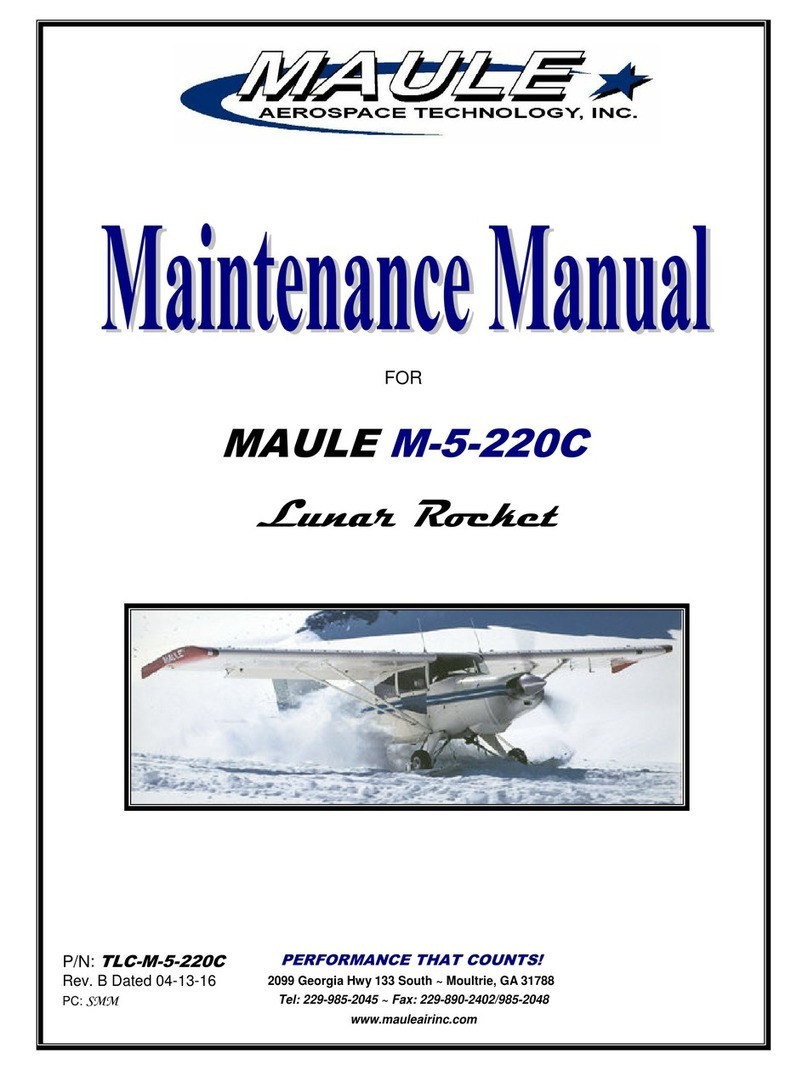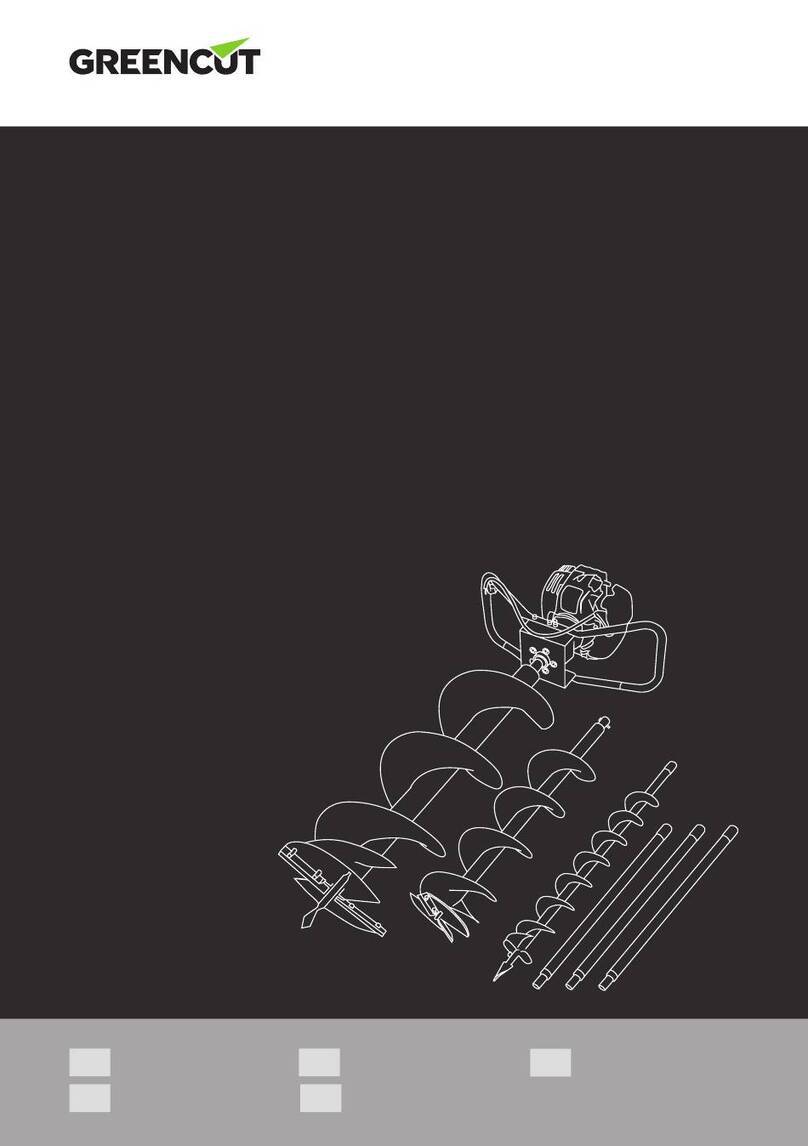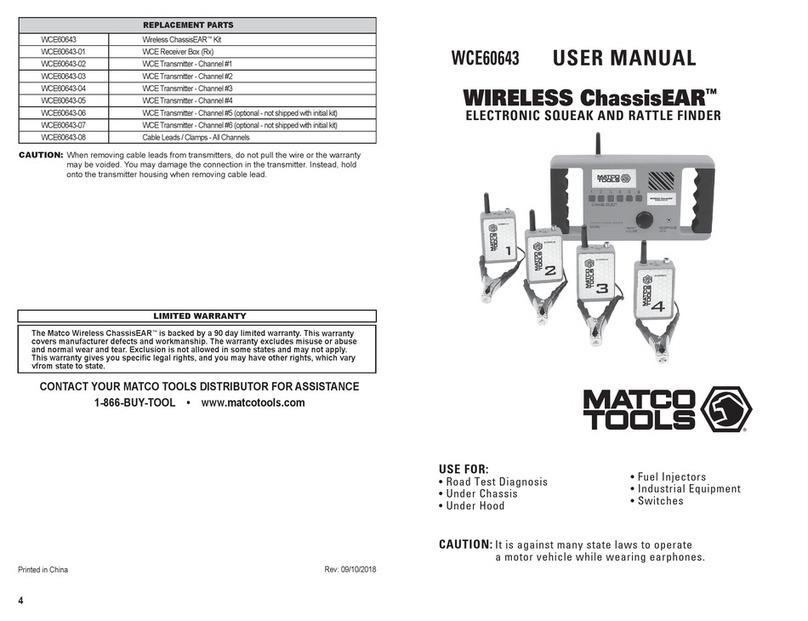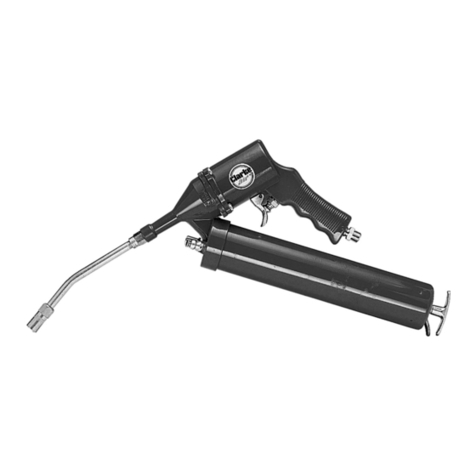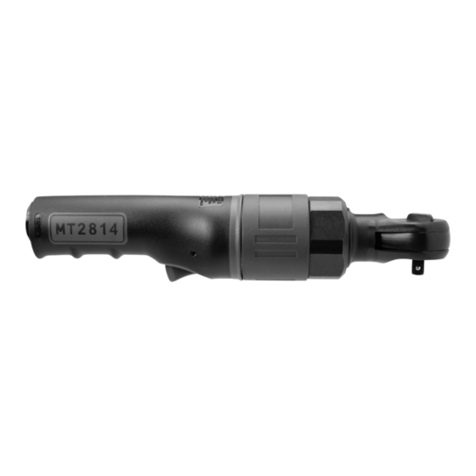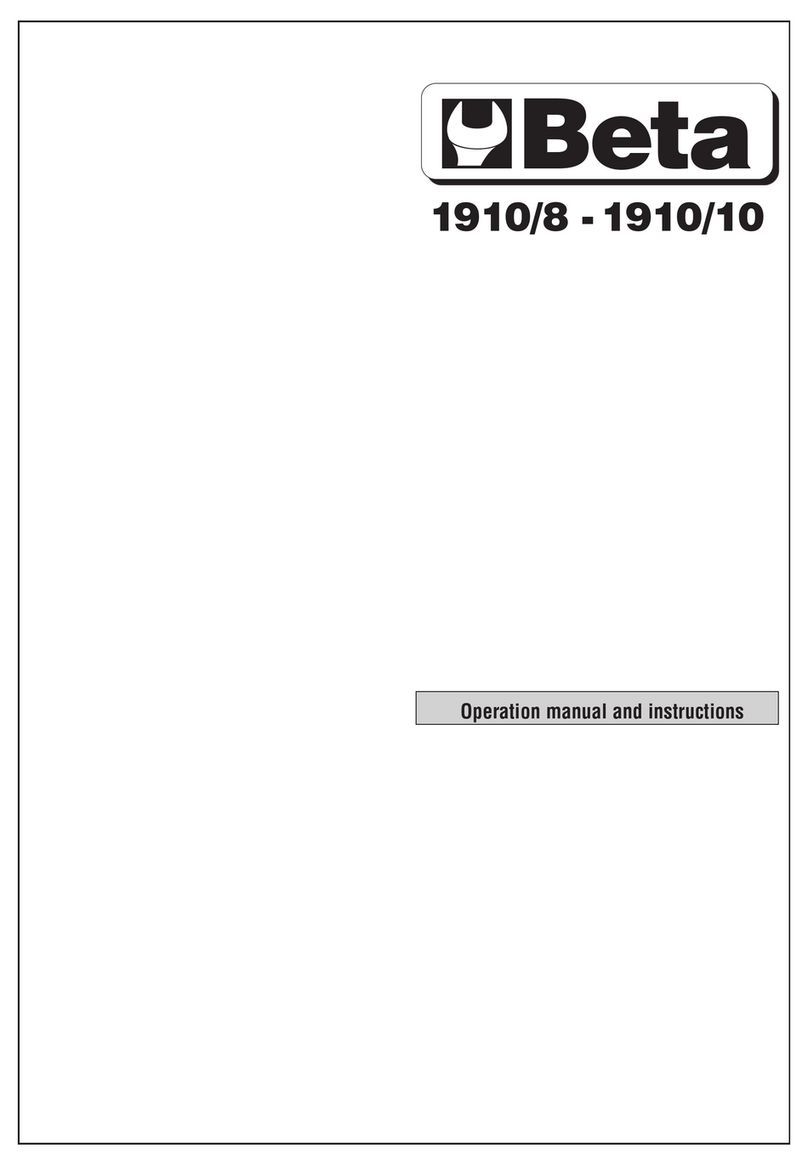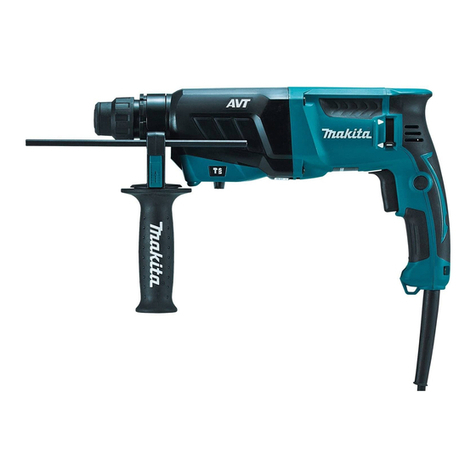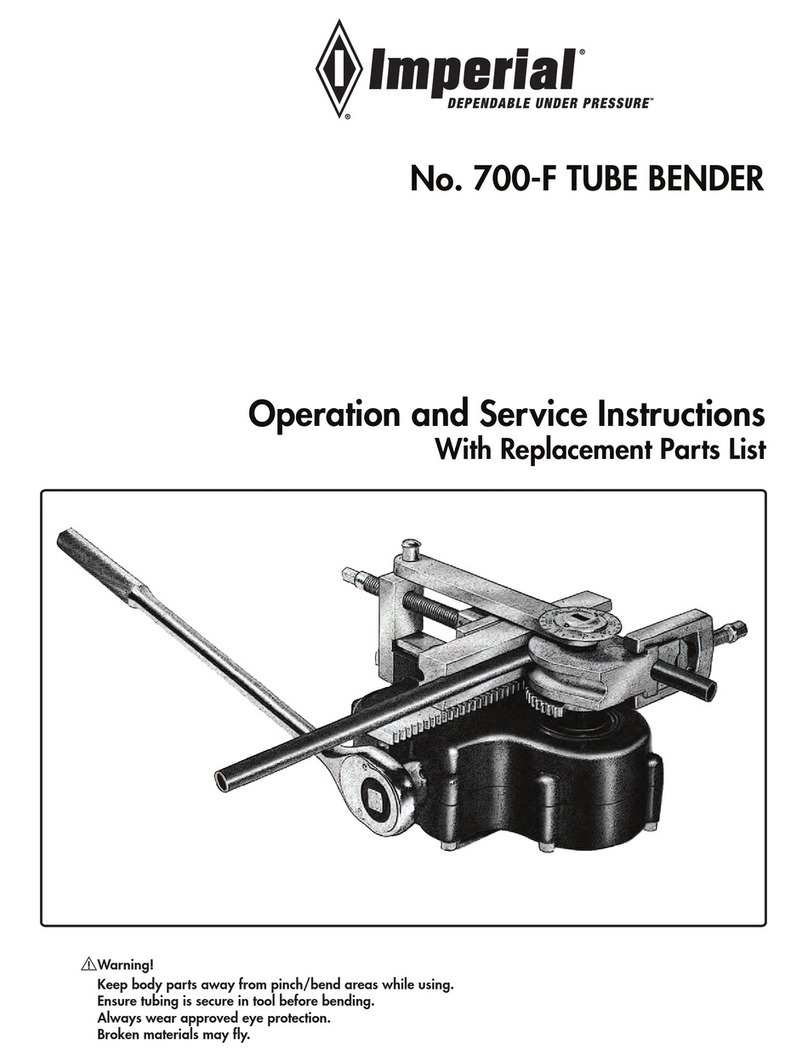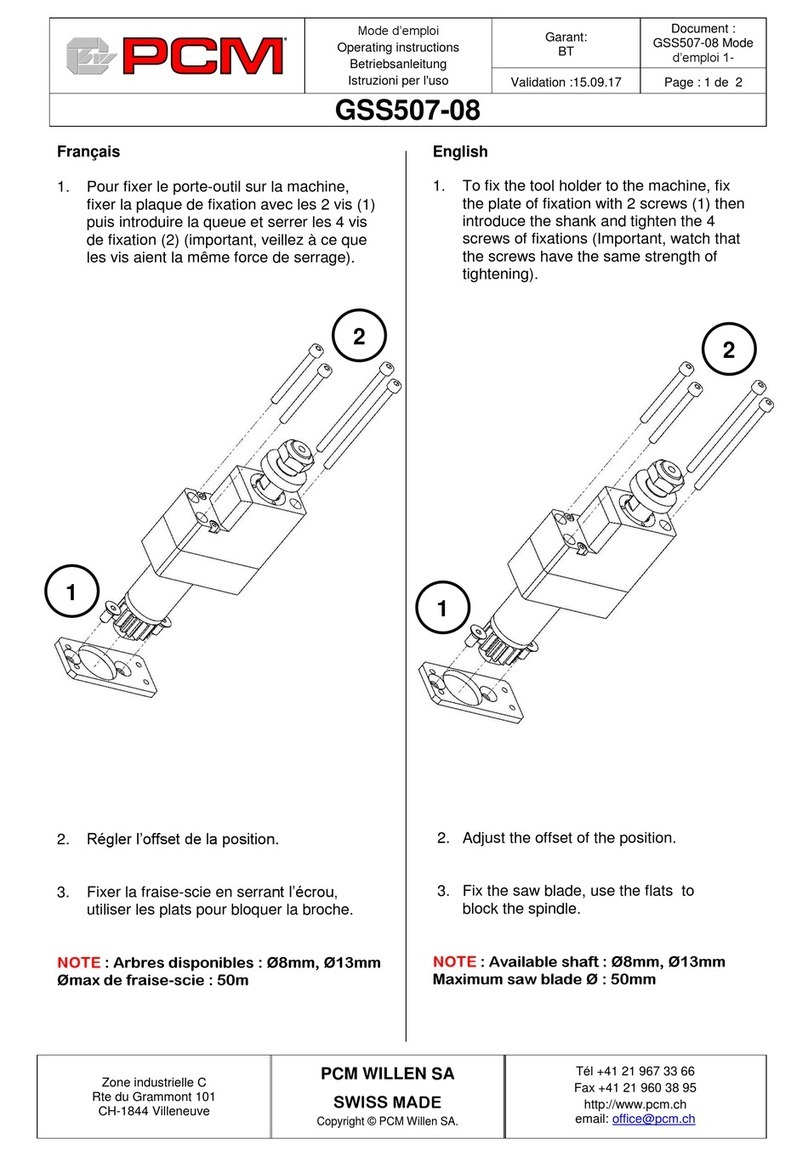Trossen Robotics AG Series How to use

Tel/Fax: 0755-82734836 www.dh-robotics.com
1
AG-95 Gripper
Short Manual (Modbus-RTU)
Content
Revisions...........................................................................................................................................2
1 Specifications.................................................................................................................................3
1.1 Performance Parameter .......................................................................................................4
1.2 Indicator ..............................................................................................................................5
1.3 Dimensions..........................................................................................................................5
1.4 Standard flange ...................................................................................................................6
1.5 Pinout Description...............................................................................................................6
2 Modbus-RTU Control ....................................................................................................................7
2.1 Wiring .................................................................................................................................7
2.2 Debugging software description .........................................................................................8
2.1.1 Installation and wiring of debugging software.........................................................8
2.1.2 Debugging software instructions..............................................................................9
2.3 Modbus-RTU Description.................................................................................................12
2.3.1 Default Communication Parameters ......................................................................12
2.3.2 RTU Framing .........................................................................................................13
2.3.3 Register Mapping...................................................................................................13
2.3.4 Register Description...............................................................................................15
2.3.4.1 Initialization ................................................................................................15
2.3.4.2 Force............................................................................................................15
2.3.4.3 Position........................................................................................................16
2.3.4.4 Initialization State .......................................................................................16
2.3.4.5 Gripper State ...............................................................................................17
2.3.4.6 Current Position ..........................................................................................17
2.3.4.7 Save Parameter............................................................................................18
2.3.4.8 Initialization Direction ................................................................................18
2.3.4.9 Slave Address..............................................................................................19
2.3.4.10 Baud Rate ..................................................................................................19
2.3.4.11 Stop Bits ....................................................................................................19
2.3.4.12 Parity .........................................................................................................20
2.3.4.13 Test I/O Parameters ...................................................................................20
2.3.4.14 I/O Mode Switch .......................................................................................21
2.3.4.15 I/O Parameter Configuration.....................................................................21
3 I/O Control...................................................................................................................................23

Tel/Fax: 0755-82734836 www.dh-robotics.com
2
Revisions
Date
Version
Revised content
20200426
V1.0
First edition, write wiring instructions and
command instructions
20200904
V2.0
Change some instructions , Update the description
of IO mode
20210401
V2.1
Normal update, Add debugging software
description

Tel/Fax: 0755-82734836 www.dh-robotics.com
3
1 Specifications
AG series are adaptive electric gripper, The number(AG-number) represents the maximum
gripping stroke of the gripper. The gripper is equipped with a pair of parallel fingertips, which runs
symmetrically during the movement. The main structure of the gripper is a smooth rectangular
structure. It is equipped with an 8-core communication interface, as shown in Figure 1.1. It has the
following characteristics:
Controllable force/position: The gripper can program and adjust the grip position and grip
force. In the process of gripper movement, the running speed is related to the clamping force. The
greater the clamping force is, the faster the running speed is.
Multiple communication modes: The gripper supports Modbus RTU protocol and IO mode
control. Other communication protocols such as USB and ETHERNET can be transferred through
protocol converter.
Gripping detection: The combination of force control and position control is adopted in the
gripping process.
Gripping feedback: The state of the gripper can be read by programming, and can also be
judged according to the indicator of the gripper.
Fingertips can be customized: Fingertips can be replaced according to situation, which is
suitable for precision machining, parts assembly, and other fields.
Figure 1.1 AG series gripper

Tel/Fax: 0755-82734836 www.dh-robotics.com
4
1.1 Performance Parameter
The specific parameters of AG-95 gripper are listed in Table 1.1.
Table 1.1 AG-95 specifications
AG-95 performance parameters.
Gripping force (per jaw)
45-160N
Opening/closing stroke (both sides)
0-98mm
Opening/Closing time
0.7s/0.7s
Weight
1kg
Position repeatability (both sides)
±0 .03mm
Noise emission
< 50 dB
Ingress protection rating
IP54
Communication protocols
Modbus RTU(RS485), I/O
Nominal voltage
24V DC±10%
Nominal current
0.8 A
Peak current
1.5 A
In the actual gripping, you should take the gripping angle and gripping position into account.
The following right-angle coordinate system is established, and the corresponding directions
of the X-axis, Y-axis, and Z-axis are shown in Figure 1.2 below. The force perpendicular to the
gripped flat surface is used as Fz, the x-axis direction torque is Mx, the y-axis direction torque is
My, and the z-axis direction torque is Mz. The AG-95 finger load table is shown in Table 1.2:
Figure 1.2 Finger load diagram
Table 1.2 AG-95 Finger load.
AG-95
Max allowable vertical load (static)
300N
Max allowable moment Mx (static)
4.75 N·m
Max allowable moment My (static)
4.75 N·m
Max allowable moment Mz (static)
4.75·N·m

Tel/Fax: 0755-82734836 www.dh-robotics.com
5
1.2 Indicator
The gripper can feed back the state of the gripper in real time. In addition to the command
reading, it can also be judged on the color of the indicator:
1.3 Dimensions
The gripper hardware parameters contain the specific size of the gripper, the mounting hole, as
shown in Figure 1.3(a), Figure 1.3(b).
Figure 1.3 (a) Dimension drawing of AG-95
Figure 1.3 (b) Finger-tip installation dimension drawing
Color description of indicator
·Uninitialized state: Red light blinks, other lights are off.
·Initialized State: the blue light is always on, indicating that it is in the operable state.
·Received command state: the red light blink once quickly (because the blue light is
always on at this time, the gripper indicator light will looks like a purple light).
·Object caught state: green light is always on, other lights are off.
·Object dropped state: green light blinking.

Tel/Fax: 0755-82734836 www.dh-robotics.com
6
1.4 Standard flange
The flange is used for the connection between AG-95 electric gripper and robot. The company
provides standard flange, as shown in Figure 1.4. The gripper also supports custom flanges.
Figure 1.4 Standard flange according to ISO 9409-1-50-4-M6
1.5 Pinout Description
The pinout of the gripper is shown in Figure 1.5, and the pin description is shown in
Table 1.3.
Figure1.5 Pinout assignment
Table 1.3 Pinout assignment
Wire number
Wire color
Description
1
White
485_A
2
Brown
485_B
3
Green
OUTPUT 1
4
Yellow
OUTPUT 2
5
Grey
24 V
6
Pink
INPUT 2
7
Blue
INPUT 1
8
Red
GND

Tel/Fax: 0755-82734836 www.dh-robotics.com
7
2 Modbus-RTU Control
2.1 Wiring
Use the provided RS-485 to USB converter (see the schematic in Figure 1.1 below) to plug
into a PC or other Controllers.
Figure 2.1 RS485 Connection
The outgoing line of clamping claw body can be changed according to the needs of
customers. For the cooperative robot with RS485 or IO interface at the end of the cooperative
robot, and using the front-end interface robot of M8, the aviation plug of M8 can be customized
for connection. When it needs to be extended, the aviation plug of M8 can be used for extension.
This plan needs to be confirmed with our company, as shown in the figure below:
Figure 2.2 Connecting the end of the robot
Warning
·Please check the connector before inserting, and do not forcibly insert the plug. Even if
the cable connector has a fool-proofing design, but you can still forcibly insert it, then the
gripper would be damaged.

Tel/Fax: 0755-82734836 www.dh-robotics.com
8
2.2 Debugging software description
The debugging software is specially used to control the gripper and set debugging parameters
on the computer. Because there is no RS485 interface in the computer, the USB to 485 module is
needed to convert the interface to USB interface, which is convenient for the debugging and
control of the gripper in the computer.
2.1.1 Installation and wiring of debugging software
Connecting by debugging software is essentially controlled by RS485 interface. The specific
connection needs to be connected to the 24 V, GND, 485_ A(T/R+,485+) , 485_ B (T / R -, 485 -) 4
wires in total. The power supply is a 24 V DC regulated power supply. Plug the USB port of the
module into the USB port of the computer. The wiring definitions of different series are different.
Please connect according to the instruction of specific clamping claw, as shown below:
Figure 2.3 RS485 Connection
Software can be downloaded on the official website. Software and driver are integrated in the
process of software installation, and both are installed together. It is recommended to check the
create shortcut during installation.
Wiring instructions
·① : when the device (computer) has RS485 interface, the communication can be directly
connected to RS485_A and RS485_B communication lines without transferring to 485
module through USB
·② : in this way, other serial port debugging software (such as MODBUS poll) can be
used for debugging

Tel/Fax: 0755-82734836 www.dh-robotics.com
9
Figure 2.4 (a) installation interface 1
Figure 2.4 (b) driver installation interface
2.1.2 Debugging software instructions
‘Before use, it is necessary to connect the corresponding wiring according to the instructions
(see 2.1.1 Installation and wiring of debugging software).
Open the software, the software will automatically identify the serial port, baud rate, ID number
and other information of the gripper for automatic connection. As shown in the figure below:

Tel/Fax: 0755-82734836 www.dh-robotics.com
10
Figure 2.5 main control interface
The specific interface description is as follows:
The gripper body uses Modbus RTU for communication, and can read and write data into the
register. The data can be read and written at the view register. The data includes control, feedback,
user parameters and I/O parameters as shown in the following figure:
Interface description
·① Initialization and demonstration mode: the gripper needs to be initialized before
operation to calibrate the zero point. The demonstration mode is a cyclic program.
·② Control interface: it can control the position, force and speed of the gripper.
·③ Clamping status: real time display of clamping status of clamping claw.
·④ Position current real time graph: real time display position and current. The
current represents the current of the internal motor, not the current actually consumed by
the gripper. The current real-time graph can reflect the stability of clamping force.
·⑤ Parameter setting: the configuration parameters of Modbus RTU, such as baud rate
and check bit, can be configured; IO mode is to configure the parameters related to IO
mode;

Tel/Fax: 0755-82734836 www.dh-robotics.com
11
Figure 2.6 View
If there are multiple 485 devices, sometimes the baud rate and ID number of the gripper need
to be modified, the parameters can be modified in Modbus RTU parameters
Figure 2.7 Modbus RTU parameters
You can set and configure the gripper I / O parameters in [I / O parameters]. After modifying
the parameters, please click Save button to save. The following figure shows the operation of
opening IO mode:

Tel/Fax: 0755-82734836 www.dh-robotics.com
12
Figure 2.8 Modbus RTU parameters
The steps of switching IO are as follows:
2.3 Modbus-RTU Description
2.3.1 Default Communication Parameters
Slave Address :1
Baud Rate :115200
Data Bits :8 bits
Stop Bits :1 stop bit
Parity :None
Steps to switch IO mode
·① Open IO mode: open IO mode first.
·② Configure four groups of IO parameters: set the four groups of parameters of
gripper, including position, force and speed.
·③ Save: click the Save button to write the parameters to the internal register of flash,
and restart to control.
·④ Restart: after the restart, the switch to IO mode is successful. You can control the
gripper according to the input signal, and the running status will be fed back through
output.

Tel/Fax: 0755-82734836 www.dh-robotics.com
13
2.3.2 RTU Framing
This gripper uses the standard Modbus-RTU protocol.
In RTU mode, the first field is the device address. The allowable characters transmitted for all
fields are hexadecimal 0 ... 9, A ... F. Networked devices monitor the network bus continuously,
including during the silent intervals. When the first field (the address field) is received, each device
decodes it to find out if it is the addressed device.
A typical message frame is shown in Table 2.1.
Table 2.1 RTU Framing (Function Code:0x06)
Slave Address
Function
Register address
Register data
CRC
01
06
01 00
00 01
49 F6
Slave Address: The Slave address of the gripper. The default is 1, you can also modify it through
write different value to Slave Address register.
Function: The Function Code field tells the addressed slave what function to perform. Includes read
or write registers function.
Register address: Specifies which registers reference to be written.
Register data: Specifies which value to be written. Each register (word - 16 bits) of the Modbus
RTU protocol is composed of 2 bytes (8 bits) from the Gripper.
CRC: the CRC error-checking field contains a 16-bit value implemented as two eight-bit bytes. The
CRC field is appended to the message as the last field in the frame. The low-order byte of the field
is appended first, followed by the high-order byte. The CRC high-order byte is the last byte to be
sent in the message.
Supported Modbus Function Code:03 (HEX): Read Holding Registers;04 (HEX): Read Multiple
Registers;06 (HEX): Write Single Register;10 (HEX): Write Multiple Registers
2.3.3 Register Mapping
The gripper’s Modbus-RTU registers consist of two types of registers: the basic control
registers and the configuration registers.
Basic control registers: initialization, force setting, reference position, speed, and some
states.
Configuration registers: gripper’s parameter configuration. Includes Modbus
communication parameters and I/O parameters.

Tel/Fax: 0755-82734836 www.dh-robotics.com
14
Table 2.2 Basic Control register map
Function
High
bytes
Low
bytes
Description
Write
Read
Initialization
0x01
0x00
Initialize the
gripper
0x01:initialization;
0xA5: Fully
initialization
Current setting
force
0x01
Gripper’s
force
20-100 (%)
Closing-force
currently set
reserve
0x02
-
-
-
Position
0x03
Position
0-1000 (‰)
Reference position currently
set
Initialization
state
0x02
0x00
Initialization
state of the
gripper
Read Only
0:Not initialized;1:
Initialized
Gripper state
0x01
Gripper state
Read Only
0:In motion;
1:Reach position;
2 Object caught;
3:Object dropped
Position
0x02
gripper
position
Read Only
Current actual position
Table 2.3 Configuration register map
Function
High
bytes
Low
bytes
Description
Write
Read
Save
Parameter
0x03
0x00
Save all the parameters
0:default,1:Write all
parameters to save
0
Initialization
direction
0x01
Configure
initialization direction
0: Open,1:Close
(default: 0)
Current setting
Slave Address
0x02
Configure gripper
Modbus address
0-255 (default: 1)
Current setting
Baud Rate
0x03
Configure gripper
Modbus Baud rate
0-5:115200,57600,
38400,19200,9600,
4800(default :0)
Current setting
Stop Bits
0x04
Configure gripper
Modbus stop bits
0:1 stop bit;
1:2 stop bits
(default: 0)
Current setting
Parity
0x05
Configure gripper
Modbus Parity
0: None parity;
1: Odd parity;
2: Even parity (default: 0)
Current setting
I/O Parameters
Test
0x04
0x00
Test I/O parameters
1;2;3;4
Current setting
I/O Mode
Switch
0x02
I/O control switch
0:OFF,1:ON
Current setting
I/O Parameter
Configuration
0x05-
0x10
Four groups of I/O
parameters
position 1,force 1 to
position 4,force 4
Current setting

Tel/Fax: 0755-82734836 www.dh-robotics.com
15
2.3.4 Register Description
2.3.4.1 Initialization
This register is used to initialize the gripper.
Write: If write 1 (0x01 hex) to this register, the gripper will be initialized (fingers move to the
minimal or maximum position. The initialization direction depends on the value of initialization
direction register). If write 165 (0xA5 hex) to this register will fully initialize the gripper( find the
minimal and maximum position).
Read: if gripper need to be initialized or have initialized, this register value is 0; and if gripper
is in initializing process, this register value is 1.
The register address is 0x0100. The description of this register is shown in Table 2.4.
Table 2.4 Initialization
Function
Address
Description
Write
Read
Initialization
0x0100
Initialize the
gripper
0x01:initialize;
0xA5: Fully initialize
Current setting
The gripper needs to be initialized before control.
The sample command is as follows:
Initialize (write):
Send: 01 06 01 00 01 49 F6
Receive: 01 06 01 00 01 49 F6
Reinitialize(write):
Send:01 06 01 00 00 A5 48 4D
Receive: 01 06 01 00 00 A5 48 4D
2.3.4.2 Force
This register is used to set Force. It defines the current for the Gripper. If the current limit is
exceeded, the fingers stop and trigger an object detection.
The address is 0x0101. The description of this register is shown in Table 2.5.
Table 2.5 Force
Function
Address
Description
Write
Read
Force
0x0101
Gripper’s
closing force
20-100 (%)
Force
currently set
The force value range is 20-100, the corresponding value is 00 14–00 64(Hexadecimal).
Example:
Set 30% closing force (write):
Send: 01 06 01 01 1E 59 FE
Return: 01 06 01 01 1E 59 FE

Tel/Fax: 0755-82734836 www.dh-robotics.com
16
Read the closing force currently set (read):
Send: 01 03 01 01 00 01 D4 36
Return: 01 03 02 xx xx crc1 crc2
2.3.4.3 Position
This register is used to set the reference position of gripper's fingers, then the fingers will move
to the position immediately.
The address is 0x0103. The description of this register is shown in Table 2.6.
Table 2.6 Position
Function
Address
Description
Write
Read
Position
0x0103
Reference
Position
0-1000 (‰)
Reference position
currently set
The reference position value range is 0-1000 (‰), the corresponding value is 00 00 – 03
E8(Hexadecimal).
Example:
Set 500‰position (write):
Send: 01 06 01 03 01 F4 78 21
Return: 01 06 01 03 01 F4 78 21
Read the reference position currently set(read):
Send: 01 03 01 03 00 01 75 F6
Return: 01 03 02 xx xx crc1 crc2
2.3.4.4 Initialization State
This register is used to store current initialization state of gripper, you can get the initialization
state by reading this register.
The address is 0x0200. The description of this register is shown in Table 2.7.
Table 2.7 Initialization State
Function
Address
Description
Write
Read
Initialization
State
0x0200
Initialization state
of the gripper
Read Only
0:Not initialized;
1:Initialized
Example:
Read initialization state (read):
Send: 01 03 02 00 00 01 85 B2
Return: 01 03 02 00 00 B8 44

Tel/Fax: 0755-82734836 www.dh-robotics.com
17
2.3.4.5 Gripper State
This register is used to store the Gripper state, you can get the state of gripper by reading this
register.
And the address is 0x0201. The description of this register is shown in Table 2.8.
Table 2.8 Gripper State
Function
Address
Description
Write
Read
Gripper State
0x0201
the gripper state
Read
Only
0:In motion;
1:Reached position;
2:Object caught;
3:Object dropped
Example:
Read gripper state (read):
Send: 01 03 02 01 00 01 D4 72
Return: 01 03 02 00 02 39 85(02: object caught)
2.3.4.6 Current Position
This register is used to store the Actual position of the Gripper.
The address is 0x0202. The description of this register is shown in Table 2.9.
Table 2.9 Current Position
Function
Address
Description
Write
Read
Current Position
0x0202
Gripper actual position
Read Only
Current actual
position
Example:
Read actual position (read):
Send: 01 03 02 02 00 01 24 72
Return: 01 03 02 xx xx crc1 crc2
States Description
Different values indicate different states of the gripper. The descriptions of states are as
follows:
·00: Fingers are in motion .
·01: Fingers are at reference position. No object detected or object has been dropped.
·02: Fingers have stopped due to an object detection.
·03: Fingers are at reference position due to object has been dropped after the gripper
caught object.

Tel/Fax: 0755-82734836 www.dh-robotics.com
18
2.3.4.7 Save Parameter
This register is used to Save Parameter.
Write 1 to this register to save all parameter, If you modified the I/O or communication
parameters.
The address is 0x0300. The description of this register is shown in Table 2.10.
Table 2.10 Save Parameter
Function
Address
Description
Write
Read
Save
Parameter
0x0300
Save register’s
value to Flash
0:default,
1:Save all parameters
0
Example:
Save Parameter (Write):
Send: 01 06 03 00 00 01 48 4E
Return: 01 06 03 00 00 01 48 4E
2.3.4.8 Initialization Direction
This register is used to set Initialization Direction of gripper.
The address is 0x0301. The description of this register is shown in Table 2.11.
Table 2.11 Baud Rate
Function
Address
Description
Write
Read
Baud Rate
0x0301
Configure
initialization
direction
0: Open,1:Close
(default: 0)
Current setting
The value of this register is 0 by default.
If the register value is 0, when you send the initialization command, the gripper finger will
open and find the maximum position.
If the register value is 1, when you send the initialization command, the gripper finger will
close and find the minimal position.
Example:
Write 0 to initialization direction register:
Send: 01 06 03 01 00 00 D8 4E
NOTE
·The Saving process will take 1-2 seconds, and the gripper won’t response to other
command during this process. The gripper will response this command after saving process
finished.

Tel/Fax: 0755-82734836 www.dh-robotics.com
19
Return: 01 06 03 01 00 00 D8 4E
2.3.4.9 Slave Address
This register is used to set Slave Address of gripper.
The address is 0x0302. The description of this register is shown in Table 2.12.
Table 2.12 Slave Address
Function
Address
Description
Write
Read
Slave Address
0x0302
Configure gripper
Slave Address
0-255 (default: 1)
Current setting
The value of this register is 1 by default.
Example:
Set the Slave Address to 1(write):
Send: 01 06 03 02 00 01 E9 8E
Return: 01 06 03 02 00 01 E9 8E
2.3.4.10 Baud Rate
This register is used to set Baud Rate of gripper.
The address is 0x0303. The description of this register is shown in Table 2.13.
Table 2.13 Baud Rate
Function
Address
Description
Write
Read
Baud Rate
0x0303
Configure gripper
Modbus Baud rate
0-5:115200,57600,
38400,19200,9600,
4800(default: 0)
Current setting
The value of this register is 0 by default, corresponding to a baud rate of 115200.
Example:
Set gripper baud rate to115200 (write):
Send: 01 06 03 03 00 00 79 8E
Return: 01 06 03 03 00 00 79 8E
2.3.4.11 Stop Bits
This register is used to set Stop Bits of gripper.
NOTE
·Please make sure that no other networked device has the same slave address as the
gripper.

Tel/Fax: 0755-82734836 www.dh-robotics.com
20
The address is 0x0302. The description of this register is shown in Table 2.14.
Table 2.14 Stop bits settings
Function
Address
Description
Write
Read
Stop Bits
0x0304
Configure gripper
Modbus stop bits
0:1 stop bit
1:2 stop bits
(default: 0)
Current setting
The value of this register is 0 by default, corresponding to 1 stop bit.
Example:
Set the gripper stop bit to 1 stop bit (write):
Send: 01 06 03 04 00 00 C8 4F
Return: 01 06 03 04 00 00 C8 4F
2.3.4.12 Parity
This register is used to set Parity of gripper.
The address is 0x0305. The description of this register is shown in Table 2.15.
Table 2.15 Parity
Function
Address
Description
Write
Read
Parity
0x0305
Configure
gripper Modbus
Parity
0: None Parity
1: Odd Parity
2: Even Parity
(default : 0)
Current setting
The value of this register is 0 by default, corresponding to None Parity.
Example:
Set the gripper’s Parity to None Parity (write):
Send: 01 06 03 05 00 00 99 8F
Return: 01 06 03 05 00 00 99 8F
2.3.4.13 Test I/O Parameters
This register is used to test the I/O Parameters.
The address is 0x0400. The description of this register is shown in Table 2.16.
Table 2.16 I/O Control
Function
Address
Description
Write
Read
Test I/O
Parameters
0x0400
Test I/O
Parameters
1;2;3;4
Current setting
This register can be used to directly test 4 groups of I/O parameters through Modbus-RTU to
ensure that the I/O parameters are appropriate. For example, Write 1 to this register, the gripper will
execute action with the first group of I/O parameter.
This manual suits for next models
1
Table of contents
